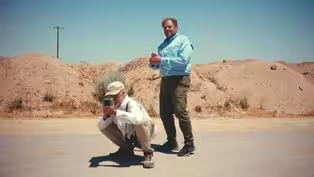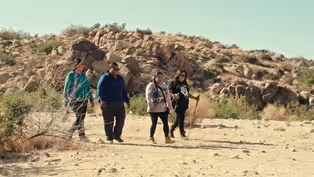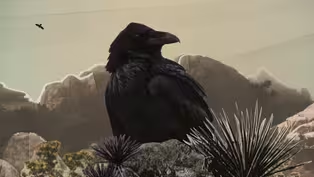
A Brief History of the Raven
Clip: Season 5 Episode 3 | 1m 10sVideo has Closed Captions
The history of the raven in both culture and nature is complex.
Ravens are smart and quick to adapt, and with more resources from urban expansion in the desert their numbers have soared. This imbalance can have a negative impact on other species, especially to the Mojave desert tortoise. But humans can find a solution to this complex issue by changing our perception of the often-villainized bird and understanding our role in the ecosystem.
Problems playing video? | Closed Captioning Feedback
Problems playing video? | Closed Captioning Feedback
Earth Focus is a local public television program presented by PBS SoCal

A Brief History of the Raven
Clip: Season 5 Episode 3 | 1m 10sVideo has Closed Captions
Ravens are smart and quick to adapt, and with more resources from urban expansion in the desert their numbers have soared. This imbalance can have a negative impact on other species, especially to the Mojave desert tortoise. But humans can find a solution to this complex issue by changing our perception of the often-villainized bird and understanding our role in the ecosystem.
Problems playing video? | Closed Captioning Feedback
How to Watch Earth Focus
Earth Focus is available to stream on pbs.org and the free PBS App, available on iPhone, Apple TV, Android TV, Android smartphones, Amazon Fire TV, Amazon Fire Tablet, Roku, Samsung Smart TV, and Vizio.
Providing Support for PBS.org
Learn Moreabout PBS online sponsorship[music] Over the past 40 years, the desert southwest from Texas to California has been the most rapidly urbanizing area in the United States.
Our urban expansion has brought a lot to the desert that never existed here before.
Not only has this provided the raven with everything it needs, but our growth has pushed further and further into desert wildlands.
This has taken a devastating toll on animals that aren't quick to adapt like the raven.
In order to limit raven populations, several ideas have been put on the table.
The most extreme: lethal removal.
These solutions have been entertained because we have a collective, deeply ingrained view of the bird.
Ravens have long occupied the role of villain or trickster in folklore and mythology.
Throughout history, many cultures believed that ravens were bad omens, signaling disaster or death.
Their haunting image probably comes from their dark, mysterious appearance, and from observing them scavenging on animal and human remains.
Now, as ravens threaten a beloved icon like the tortoise, the menacing image has only been reinforced.
Ravenville: Why Birds Flock to Desert Human Wastelands
Video has Closed Captions
Clip: S5 Ep3 | 7m 35s | Desert biologists find non-lethal solutions to control surging raven populations. (7m 35s)
Desert Ravens: A 'Major Relative' to Indigenous Traditions
Video has Closed Captions
Clip: S5 Ep3 | 4m 28s | For Indigenous peoples of the Mojave, ravens are powerful, respected elders. (4m 28s)
The Tortoise, the Raven, and Us (Preview)
Video has Closed Captions
Preview: S5 Ep3 | 30s | Ravens threaten Mojave Desert tortoises, and solutions call on shifts in human behavior. (30s)
Providing Support for PBS.org
Learn Moreabout PBS online sponsorshipSupport for PBS provided by:
Earth Focus is a local public television program presented by PBS SoCal


















